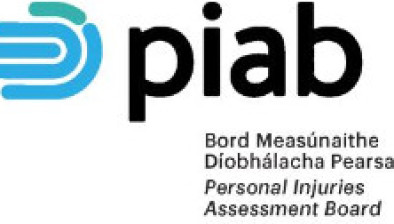High Court: Damages of over €83,500 awarded for rear-ending collision

The High Court has awarded damages of €83,563.97 to a man who suffered lumbar and leg injuries in a rear-ending collision in 2020.

About this case:
- Citation:[2025] IEHC 101
- Judgment:
- Court:High Court
- Judge:Ms Justice Emily Egan
Delivering judgment for the High Court, Ms Justice Emily Egan found that the plaintiff’s refusal to undergo an epidural injection due to his fear of needles would not be considered a failure to mitigate loss in the circumstances, and that although the plaintiff did not have a formal claim for loss of earnings, he had suffered a loss of opportunity as he could have expected to earn better wages on more favourable terms if not for his symptomology.
Background
On 4 December 2020, the plaintiff sustained soft tissue injuries to his lower back and left leg when his vehicle was rear-ended by the defendant’s vehicle.
The plaintiff worked as a heavy machine driver, and was out of work for about six months following the accident.
The case proceeded on an assessment-only basis.
Evidence
The plaintiff gave evidence that post-accident, he felt pain and stiffness in his back and leg which reduced his mobility and caused him to require painkillers nearly every day. He also suggested inter alia that due to his inability to walk long distances, he had gained nearly four stone.
When questioned as to why he did not attend for an epidural injection to assist him with his pain, as had been recommended to him by Dr Aideen Henry, an orthopaedic and sports medicine physician, the plaintiff stated that he had a morbid fear of needles.
The plaintiff estimated that his symptoms had improved by 60–65 per cent since the accident, but that his back pain and sciatica would likely continue for the foreseeable future. This was not contested by the defendant.
The plaintiff also suggested that his career opportunities had been diminished by his symptomology after the accident.
The issues in contention were whether the plaintiff’s symptoms were attributable to the accident or to pre-existing degenerative changes in his spine, whether general damages ought to have been reduced by the plaintiff’s decision against undergoing the recommended epidural injection, the appropriate award of general damages and whether damages ought to have been awarded for loss of opportunity.
The High Court
Turning to the issue of whether the plaintiff’s symptomology was caused by the accident or by pre-existing degenerative changes, Ms Justice Egan examined the parties’ reports, noting that there was some divergence of views on the interpretation of the radiological imaging and that it was impossible to discern from the reports alone which of the opinions was more cogent.
In circumstances where the doctors concerned were not present to give evidence, Ms Justice Egan considered that the onus of proof rested on the plaintiff and so she could not find that the disc protrusion at the L4/L5 level of the plaintiff’s spine was necessarily caused or worsened by the accident.
However, the judge had no difficulty in accepting that the plaintiff was previous asymptomatic in this regard and that the collision impacted the pre-existing degenerative findings in the plaintiff’s lumbar spine, leading to the symptomology complained of.
Moving to consider whether the plaintiff failed to mitigate his loss, the court considered s.34(2)(b) of the Civil Liability Act 1961 (as amended) which provides that negligent or careless failure to mitigate damage shall be treated as contributory negligence on part of a plaintiff, reducing their award in proportion to their failure to prevent or to reduce losses suffered.
Notwithstanding the advice of Dr Henry, Ms Justice Egan was not satisfied that the plaintiff acted unreasonably in failing to undergo an epidural in circumstances where the extent of the benefit from epidural injection varies from patient to patient and where the defendant tendered no evidence as to the precise benefit that the plaintiff was expected to obtain from an injection.
The court also considered the complications associated with epidural injections, the financial cost thereof which had not been quantified, and noted that the plaintiff’s fear of needles was not an ex post facto justification but a genuine fear in circumstances where he had informed Dr Henry of same immediately following her recommendation of an epidural to him.
Ms Justice Egan emphasised that “this court would be very slow to penalise a plaintiff’s fear of undergoing a series of invasive medical procedures without a full and thorough risk benefit analysis of the procedure recommended, its long term anticipated implications and its likely cost”.
As to the appropriate award of general damages, the High Court firstly highlighted that the Personal Injury Guidelines applied and then considered the category within which the plaintiff’s injuries fell. The defendant maintained that the plaintiff’s back injury was moderate in nature while the plaintiff contended that it was in the “severe and serious” category.
Although Ms Justice Egan was not satisfied that the plaintiff had sustained nerve root damage which would warrant classification as a category 7B(b)(i) injury, the judge was equally not satisfied that Category 7B(c)(ii) was appropriate, which encompasses the lower bracket of moderate back injuries including disturbance of the ligaments and muscles and soft tissue injury accelerating or exacerbating pre-existing conditions by five years or more.
The court accepted that the plaintiff had pre-existing conditions but was concerned that he had no appreciable back pain prior to the accident.
The judge also had regard to the fact that there was no compelling medical evidence that the plaintiff’s underlying conditions would have become symptomatic in the foreseeable future, finding: “This is therefore not a case of acceleration or exacerbation of a pre-existing condition of back pain or sciatica. It is a case of the initiation of such pain in a person who was previously pain free.”
Pointing out that the case did not sit comfortably within the contended-for categories, the High Court determined that Category 7B(b)(ii) more accurately captured the plaintiff’s injury and that it warranted an award of €60,000 general damages.
As to the plaintiff’s claim for loss of opportunity, the court considered the plaintiff’s contention that although his earnings did not diminish, he would have been entitled to avail of more favourable wages and terms if he was able to drive an hour each way to Limerick to obtain employment.
The court was satisfied that the plaintiff was restricted to driving short distances for work and to driving diggers only, and would be unable to assist with other tasks which might make him more attractive to other employers.
Ms Justice Egan concluded: “Whilst it is undoubtedly positive that the plaintiff has to date been able to maintain full time work, I find as a fact that the accident nonetheless inhibits, and will continue to inhibit, his earning potential. Therefore, whilst the plaintiff has not yet sustained an identifiable loss of earnings it is entirely inevitable that in the future, he will.”
In those circumstances, the court opined that a 25 per cent uplift of the plaintiff’s general damages would be entirely reasonable and awarded a further €15,000 for loss of opportunity, with special damages being agreed at €8,563.97.
Conclusion
Accordingly, the High Court awarded €83,563.97 to the plaintiff.
Buckley v Lenihan [2025] IEHC 101








